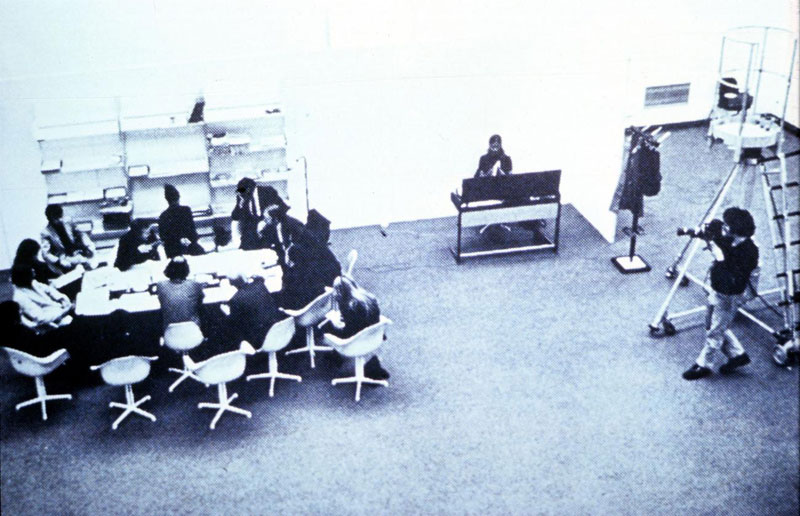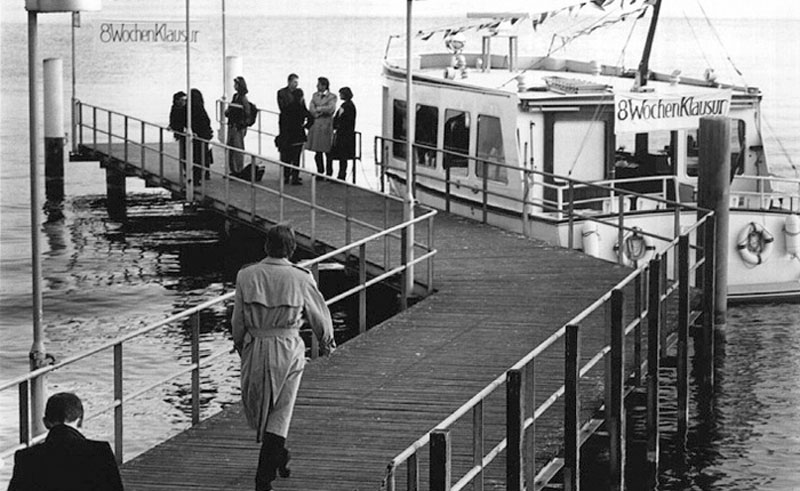
Artist Placement Group
The Artist Placement Group (APG) emerged in London in the 1960s, shifting the mission of the artist to a wider social context, including government and business. The APG’s mission was to place artists in non-art institutions, such as government departments and industry, where they could actively engage in the decision-making processes of the host. APG’s doctrine was that artists could have a positive effect on industry through both their inherent creativity and their relative ignorance of the host organizations practices. APG artists became involved in the day-to-day work of the organizations and were paid a salary commensurate with what other employees in that organization made.
APG’s first placement was with British Steel Corporation in 1969 and after that they placed artists with British European Airways, Hillie Co. Ltd, ICI Fibers, Milton Keynes Development Corporation, National Coal Board, Proteus Bygging, British Rail, Esso Petroleum and the Centre for the Study of Human Learning at Brunel University. These placements resulted in a variety of artists’ reports, interviews, films, photographs, installations and poetry. Like many other British artists and groups working outside common frameworks, the APG had a high profile abroad, particularly in Germany. APG served as a catalyst for other artist-in-residence programs and community schemes, both in Britain and abroad.
The name APG was changed in 1989 to Organization and Imagination (O&I). O&I describes itself as ‘an independent, international artist initiative, a network consultancy and research organization’. Its board of directors, members and specialist advisors include leading artists, civil servants, politicians, scientists, and academics from various disciplines.

WochenKlausur
WochenKlausur, a group of activist artists based in Vienna, has been guiding social interventions since 1993. They develop and implement programs for improving social concerns, operating on the fundamental belief that artists can develop creative solutions not just in the traditional ways but also in other areas of society. The group has discovered that artists are especially effective at devising schemes to solve problems that have not been resolved using conventional approaches.
WochenKlausur’s projects are conducted using an “artists in residency” platform. The translation of their name, “weeks of closure”, refers directly to the rigorous output that comes from the residency model which brings diverse groups of people together to develop solutions. While the solutions tend to be small scale, they are sustainable solutions that can grow and develop over time without the groups continued involvement. One of the group’s first projects provided medical care facilities for the homeless and as an extension of this project a mobile clinic was permanently established in the Vienna area. In Zurich, in collaboration with government officials and social service groups, they established a hotel and facilities for drug-addicted women, which continued to operate for six years. WochenKlausur established several small-scale initiatives to turn waste materials into new and usable objects. After one of these recycling projects in Chicago a new Entity was established called Material Exchange which continues the work and provides furniture to shelters and people in need.
After several successful initiatives, invitations from art institutions in Germany, Italy, Japan, Sweden, and the Netherlands followed. WochenKlausur now works on a framework were they are invited usually by an art institution to conduct an intervention. This provides the group with the space and funding they need to achieve the intervention. Most often they are not approached with any specific request but they find the need themselves through research of the local situation. While most projects are not straightforward and call for clever maneuvering WochenKlausur works toward concrete goals. When a project has been completed, it is possible to observe how many of its objectives have been achieved and the intention can be directly compared with the result. A total of twenty projects have been successfully conducted by WochenKlausur and more than fifty artists have been involved.